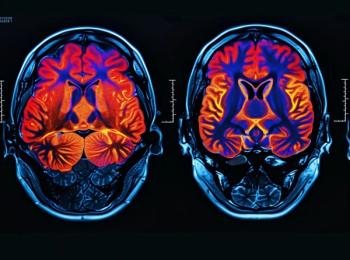
Apraclonidine Drops May Trigger Lethargy and Bradycardia in Infants
CARDIFF, Wales -- Infants given 1% apraclonidine eye drops as a diagnostic test for Horner's syndrome may be at risk for extreme lethargy, bradycardia, and respiratory depression that can last for hours.
CARDIFF, Wales, July 17 -- Infants who receive 1% apraclonidine eye drops as a diagnostic test for Horner syndrome may be at risk for extreme lethargy, bradycardia, and respiratory depression that can last for several hours.
Patrick Watts, M.B., of the University Hospital of Wales, and colleagues, said that the drops trigger episodes that lasted eight to 10 hours in two babies who required hospitalization.
In a report published in the June issue of the Journal of the American Association for Ophthalmology and Strabismus, they wrote that apraclonidine "should be used with caution or not at all, in infants under the age of six months."
They added that diluting the solution to 0.5% apraclonidine does not reduce the risk because "it is the immaturity of the blood-brain barrier in young infants that permits central nervous system depression." As a result, even at a lesser concentration, the drug can still pose a problem.
If the drug must be used in infants younger than six months, they advised that "the patient should be observed for a period of at least two hours after instillation of the drops, with admission to a pediatric ward prompted by lethargy, bradycardia, or reduced respiratory rate."
Dr. Watts and colleagues first identified the reaction in a five-month old girl who had anisocoria from the age of four weeks. An hour after 1% apraclonidine was instilled in each eye there was no reversal of the anisocoria but there was blanching of the periocular skin. The parents reported that the baby was excessively drowsy.
Two hours after the drops were instilled, the infant was admitted to the emergency department with bradycardia (84/min), shallow respiration (40/min), and a blood pressure of 110/85 mm Hg. Her oxygen saturation was 80%, improving to 100% when a facemask was used. Her condition stabilized and vital signs retuned to normal eight hours after the drops were instilled.
Dr. Watts and colleagues then asked 600 members of a pediatric ophthalmology Internet discussion group for similar experiences and as a result they identified four additional cases.
Three of the four infants had extreme drowsiness, but did not require hospitalization.
The fourth case was a 10-week-old girl who was hospitalized following instillation of 0.5% apraclonidine in each eye. An hour later she became extremely drowsy and difficult to rouse. The infant had a respiratory rate of 48/min, heart rate 158/min, and the unresponsiveness lasted 10 hours.
Apraclonidine is a selective a2 agonist developed to lower intraocular pressure and minimize the systemic side effects associated with the use of its parent drug, clonidine. It gained popularity as a diagnostic test for Horner's syndrome after an investigation of the site of action of apraclonidine incidentally uncovered a reversal of anisocoria in Horner's patients.
David G. Hunter, M. D., Ph.D. of Children's Hospital, Boston, who is editor-in-chief of the journal, said that Horner's syndrome is rare in infants, "but testing occurs frequently, so it is very important that ophthalmologists and neurologists are made aware of this complication."
Newsletter
Enhance your clinical practice with the Patient Care newsletter, offering the latest evidence-based guidelines, diagnostic insights, and treatment strategies for primary care physicians.






































































































































































































































































































